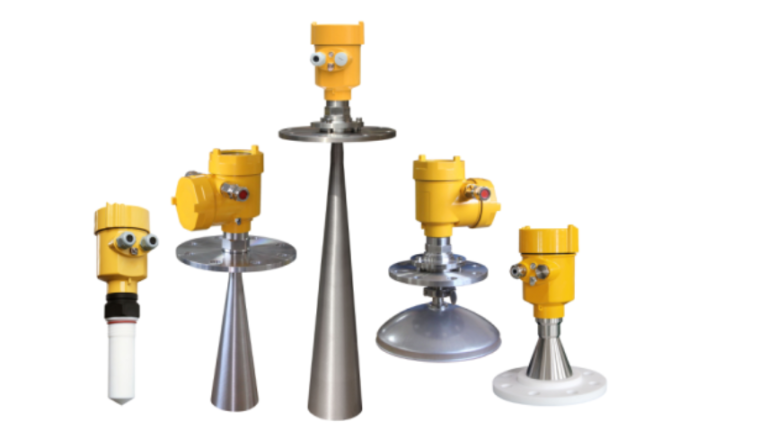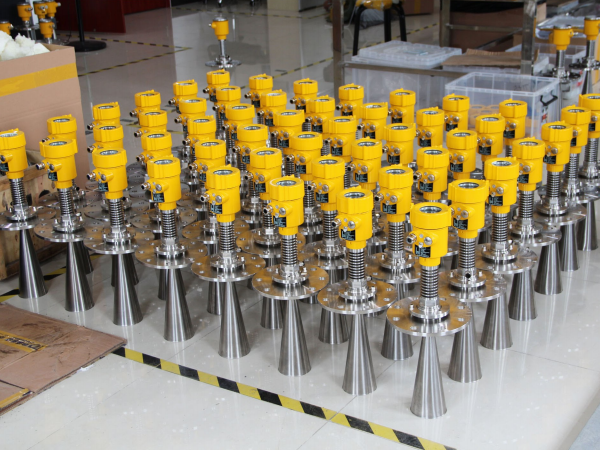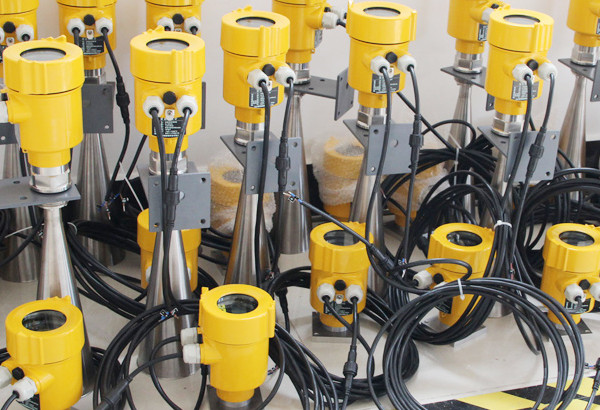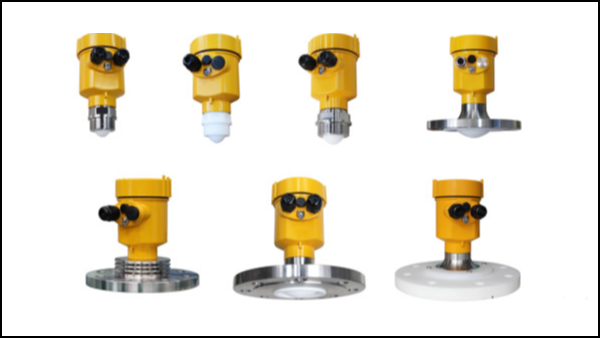Radar level meters are essential instruments used across various industries for accurate and reliable level measurement. Among the commonly used types, the 26GHz and 80GHz radar level meters stand out due to their unique features and application-specific advantages. This article provides a detailed comparison of these two types based on their working principles, technical specifications, and typical use cases.
1. Working Frequency and Wavelength
26GHz Radar Level Meters: Operate at a frequency of 26GHz, with a corresponding wavelength of approximately 11mm. This places them in the centimeter waveband (300MHz to 3GHz). Their longer wavelength enables better penetration through challenging environments such as dense dust or steam.
80GHz Radar Level Meters: Operate at a much higher frequency of 80GHz, with a shorter wavelength of approximately 4mm. This falls within the millimeter waveband (30GHz to 300GHz), providing higher energy concentration and better resolution in signal reflection.

2. Measurement Precision and Resolution
26GHz Radar Level Meters: The longer wavelength results in lower resolution, making them suitable for general applications with larger measurement ranges. They are ideal for environments where precision is less critical, and stability in challenging conditions is paramount.
80GHz Radar Level Meters: Thanks to the shorter wavelength, these meters offer significantly higher resolution and precision. They excel in applications that require detailed measurements, such as in small tanks, precise liquid levels, or materials with low dielectric constants.
3. Applicability to Different Environments
26GHz Radar Level Meters:
Suitable for solid materials such as coal, cement, and granular substances, as well as liquids like oil and chemical solutions.
Perform reliably in harsh conditions, including high temperatures, high pressures, and corrosive environments.
The wider beam angle (approximately 20°) enables them to handle larger areas effectively, though at the cost of reduced energy concentration.
80GHz Radar Level Meters:
Best suited for precise measurement in smaller containers or situations requiring high accuracy, such as in pharmaceutical or food-grade processes.
Work optimally in less dusty environments but may require advanced algorithms to mitigate errors caused by metal interference or high dust levels.
The narrow beam angle (approximately 2°) allows for better focus and reflection, reducing errors caused by surrounding obstacles.

4. Technical Features
26GHz Radar Level Meters:
Wider beam angle results in a larger measurement blind zone (typically 8cm), making them ideal for large capacity tanks.
High penetration ability through steam, dust, or foam, ensuring accurate measurements in industrial settings.
80GHz Radar Level Meters:
Narrower beam angle leads to a much smaller blind zone (typically 0.4m or less), ideal for small tanks or precise measurements.
High energy concentration allows for sharper signal reflection, though sensitivity to environmental interference is higher.
5. Typical Applications
26GHz Radar Level Meters:
Widely used in chemical industries, water resource management, and bulk solid storage.
Particularly effective in environments where high penetration and anti-interference are critical, such as coal silos or cement plants.
80GHz Radar Level Meters:
Commonly applied in high-precision industries like pharmaceuticals, food processing, and petrochemicals.
Ideal for applications such as deep well measurement, small tank level monitoring, or scenarios requiring extreme accuracy.

Case Studies
Case Study 1: Chemical Industry Application A large chemical plant required robust level measurement for its high-temperature, pressurized tanks storing corrosive liquids. The 26GHz radar level meter was chosen due to its ability to penetrate steam and maintain stability under extreme conditions.
Case Study 2: Food Processing Facility A food processing facility needed precise measurements in its small, hygienic tanks storing liquid ingredients. The 80GHz radar level meter provided the accuracy and narrow beam focus required to measure levels without interference from nearby equipment.
Market Trends and Considerations
The demand for radar level meters is growing as industries move towards automation and precision monitoring. While 26GHz meters remain popular for general-purpose applications due to their cost-effectiveness and robustness, 80GHz meters are gaining traction for their accuracy and ability to operate in specialized environments. The choice often depends on factors such as:
Cost: 26GHz meters are generally more affordable and easier to maintain.
Accuracy: For applications requiring high precision, 80GHz meters are indispensable.
Environmental Factors: Dust, steam, or foam-heavy environments often favor 26GHz meters, while clean and controlled environments benefit from 80GHz technology.

Summary
Both 26GHz and 80GHz radar level meters have their strengths and weaknesses. Selecting the appropriate radar level meter depends on specific application requirements, including measurement precision, environmental conditions, and cost considerations:
Choose 26GHz for large targets, challenging conditions, and cost-sensitive applications.
Choose 80GHz for high-precision tasks, small targets, and environments requiring detailed measurement.
By carefully evaluating the measurement environment and operational needs, users can maximize the efficiency and effectiveness of their radar level meters, ensuring optimal performance and reliability.
